CROSSING THE LINE
AI tracks down how billions of longline baited hooks are killing hundreds of thousands of albatrosses
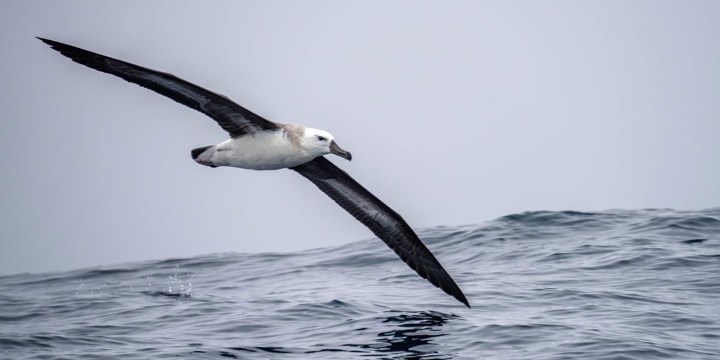
Longline fishing boats are killing hundreds of thousands of albatrosses each year. It’s a problem that was almost impossible to document — until artificial intelligence (AI) stepped in.
The biggest threat albatrosses face at sea is being caught and killed on commercial fishing hooks as they target bait for food. New research using GPS signals and algorithm analysis has revealed the staggering scale of longline fishing and the danger it poses to wildlife.
Each day around the globe about 1,000 vessels let out fishing lines of up to 100km, equating to billions of baited hooks — and most are set just before dawn when seabirds mostly hunt. The bait is an easy meal for an albatross but is often their last. They get caught on the hook and drown as the line sinks into the water.

The bait is an easy meal for albatrosses but can often be their last. They get caught on the hook and drown as the line sinks into the water. (Image: Supplied)
Monitoring high-seas fisheries is extremely challenging because of the distance of ships from shore and the extended periods vessels spend at sea, with some not returning to port for many months. Innovative research published in Biological Conservation applied machine learning to process billions of GPS locations from longline vessels to identify when vessels are deploying their hooks.
“Harnessing satellite data in this way shows the vast global footprint of longline fishing,” said David Kroodsma, director of research and innovation at Global Fishing Watch, which partnered with Birdlife International in the study.
“It also allows us to better understand when these vessels are setting their lines, providing a new management tool to help reduce risks to endangered seabirds.”
Globally, seabirds are the most threatened of all avian groups, with 31% of seabird species listed as critically endangered, endangered or vulnerable by the International Union for Conservation of Nature (IUCN). Bycatch — unwanted creatures on hooks — is one of their primary threats. The report estimates that longline fishing kills between 160,000 and 320,000 birds each year, the majority being albatross and petrel species.
Read more in Daily Maverick: Fatal mouse attacks on adult birds spark red alert at world’s biggest wandering albatross colony
Drifting pelagic longlines are the most widespread fishing gear in the oceans, many of them dropped by illegal, unregistered boats. About once a day they’re dropped and then hauled in by vessels that often stay at sea for weeks or months at a time, offloading their catch and getting resupplied by transshipment and support vessels. This has made it challenging to monitor or police their activity.
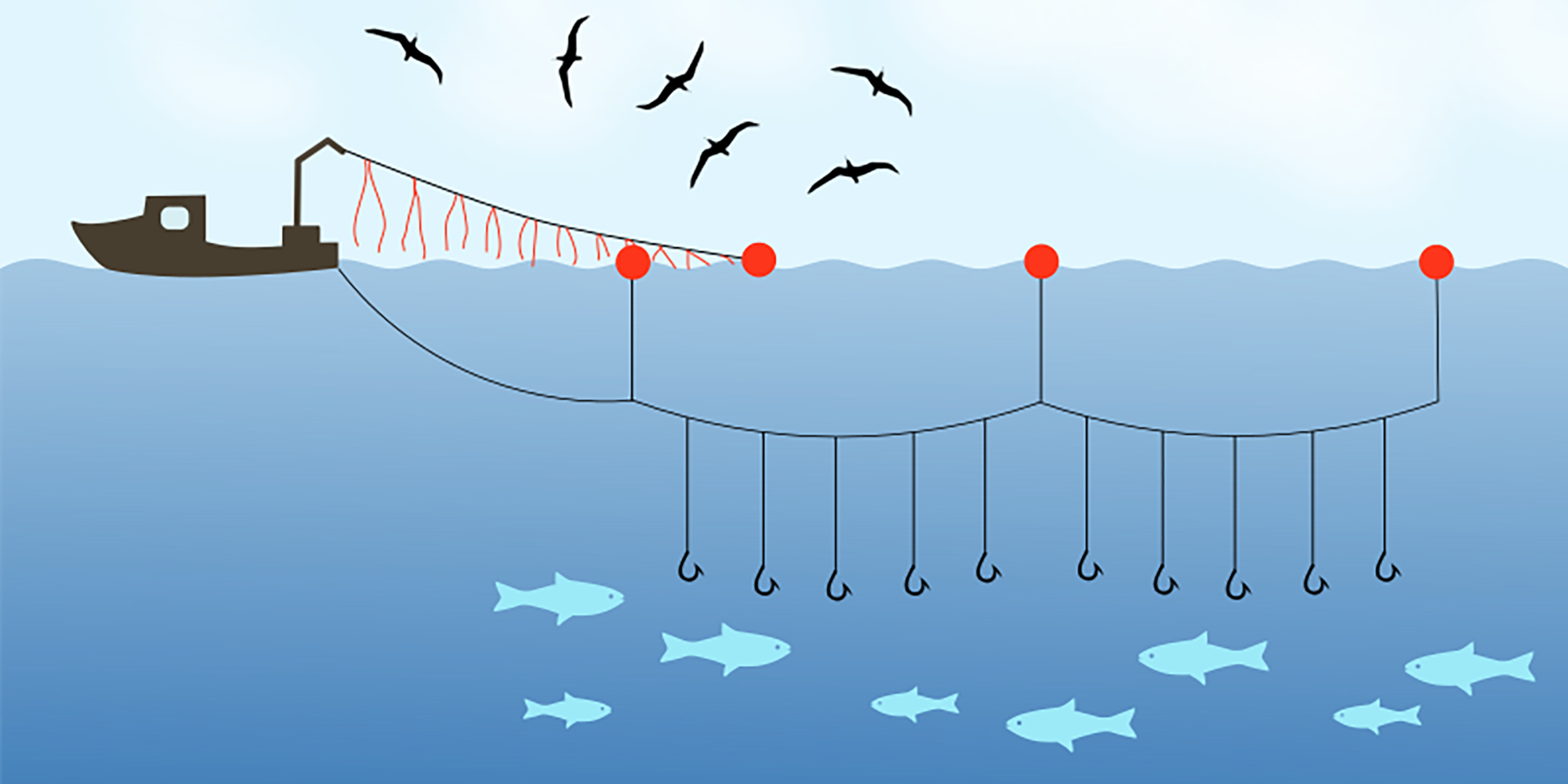
In the southern oceans, vessels are required by the International Commission for the Conservation of Atlantic Tunas and the Indian Ocean Tuna Commission to adopt two out of the three management measures, which are to use bird-scaring tory lines (colourful streamers) to deter birds when the lines are laid; to weight lines so they sink quickly out of the reach of birds; and to deploy longlines at night, between nautical dusk and nautical dawn. (Image: Supplied)
In the southern oceans, vessels are required by the International Commission for the Conservation of Atlantic Tunas and the Indian Ocean Tuna Commission to adopt two out of the three management measures, which are:
- To use bird-scaring tory lines (colourful streamers) to deter birds when the lines are laid;
- To weight lines so they sink quickly out of the reach of birds; and
- To deploy longlines at night, between nautical dusk and nautical dawn.
Fleet compliance
Until now there has been no way to determine fleet compliance except by onboard observers who travel with a very small number of boats. The researchers hit on the idea of using the Automatic Identification System (AIS), a device designed for safety at sea which broadcasts vessels’ GPS coordinates every two to 30 seconds. Using recent advances in satellites and machine learning, researchers were able to monitor fishing activity globally.
It was necessary to “teach” the artificial intelligence system to understand how the movement of fishing boats reflected the activity they were undertaking. But once it did, the results were astounding.
According to the report, “We could identify the exact times that each longliner sets its lines, thus providing an independent method to verify night setting.” From vessel movement integrated with birds carrying GPS transmitters, they could pinpoint fishing patterns like an unseen eye in the sky.
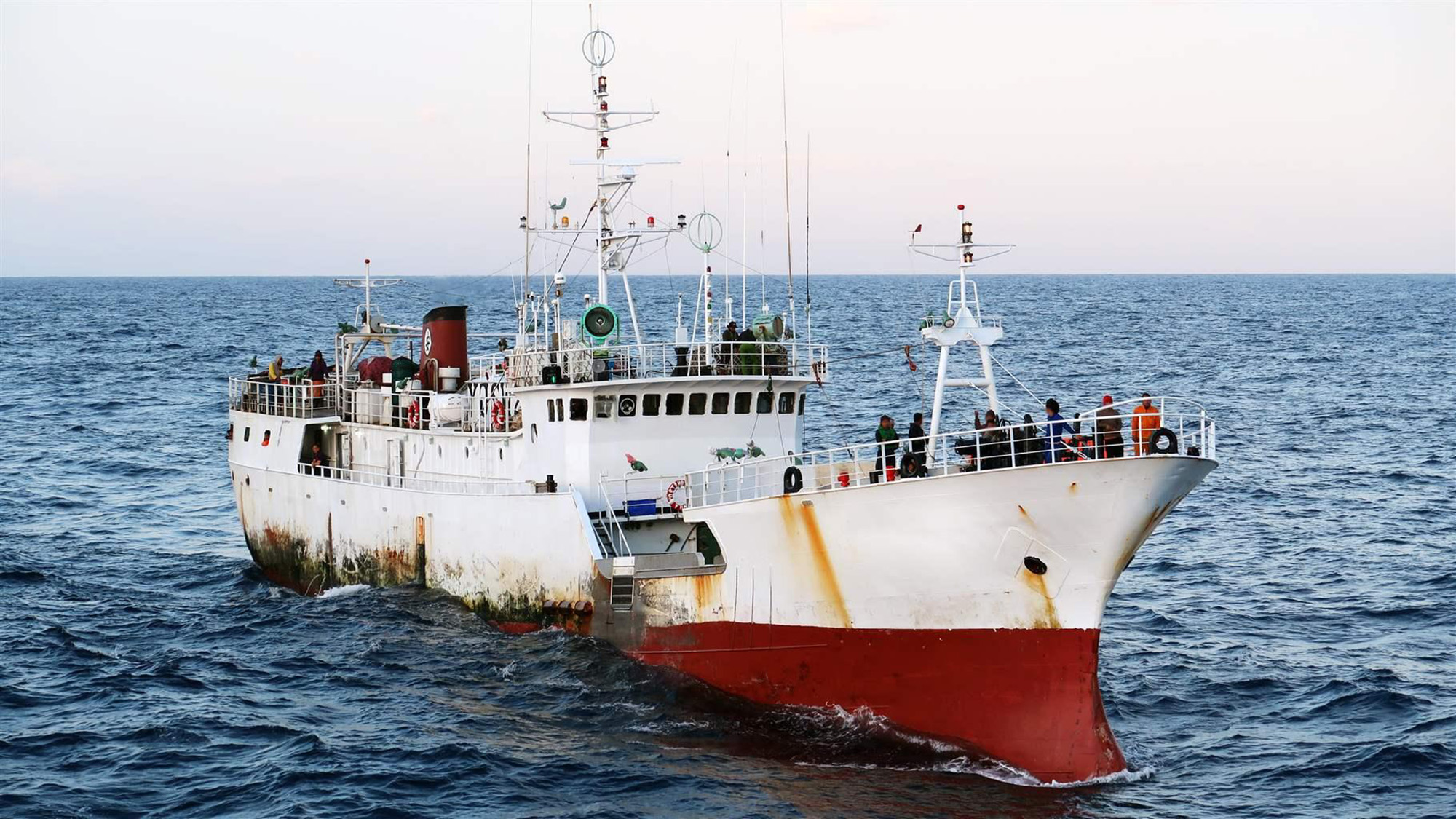
An Illegal and unidentified longliner. (Photo: Supplied)
Between January 2017 and December 2020, researchers logged 1,451,159 longline sets globally from 4,923 vessels — around 1,000 sets a day by vessels broadcasting on AIS.
Using albatrosses with radio tags, they found that the birds redirected towards fishing vessels up to 30km away, suggesting that they can detect fishing vessels at this distance, which is also the limit of their visual range. Graphing this range against sets, they calculated that on an average day about 5.3 million square kilometres, or more than 40% of the world’s oceans, were within albatross range of a fishing boat setting a longline
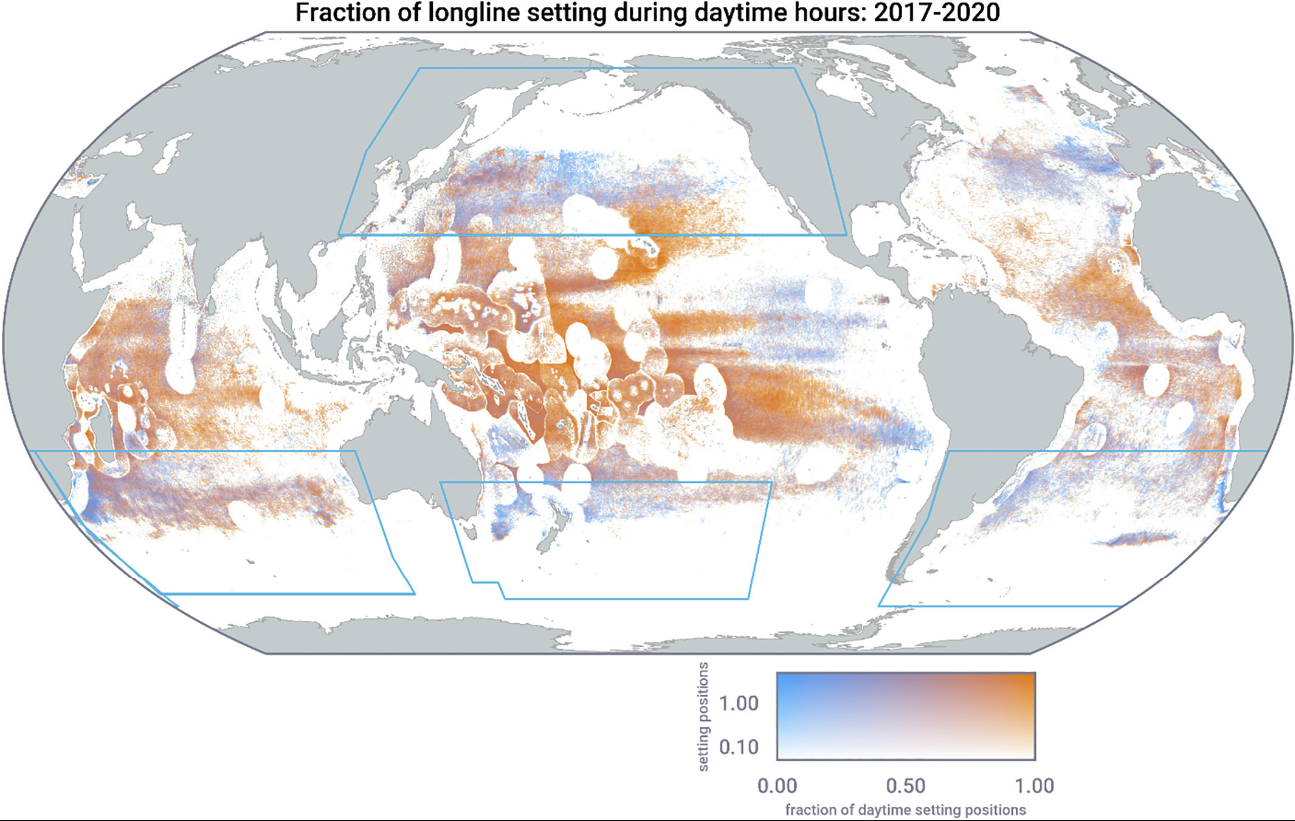
Global longline sets (in red) that occurred during twilight and daylight hours over the time period analyzed, from 2017 through to 2020. Bounding boxes represent regions where tuna regional fisheries management organisations recommend setting at night to avoid seabird bycatch. (Image: Supplied)
A deeply worrying finding was that most boats set longlines at the time seabirds are most active — just before and after sunrise.
“Globally, the most common time to start a set is in the hour before sunrise, with almost half of the sets overlapping with the time between nautical dawn and sunrise. These patterns of setting longlines are a threat to endangered and threatened albatrosses.”
On setting times, national fleets were simply lying. Taiwan, for example, reported that 57-95% of its observed fishing effort from 2017 to 2020 was conducted using night setting. The algorithm, however, found the true figure to be a mere 1.4–15%. For Japan, which reported night setting to be between 33% and 53%, the algorithm showed only 1% to 7%. New Zealand, on the other hand, set lines at night between 93% and 100% of the time.
“This study reveals, for the first time, the extremely large global footprint of longline sets and the global prevalence of daytime setting when many seabirds are most active,” write the researchers.

The albatross boasts an impressive wingspan, allowing it to traverse vast distances over the open ocean. (Photo: Wikimedia)
“At night, when prey are harder to detect, the more optimal foraging strategy may be to rest on the water’s surface and forage opportunistically. At dawn, however, when ‘foraging-in-flight’ again becomes the optimal strategy, albatross will take flight to forage on the high concentration of prey still available at the water’s surface.”
Fishers, says the report, may believe it is too costly or inconvenient to change setting practices.
“These fleets are often operating at the edge of profitability or are even losing money. If night setting is perceived to reduce catch and profitability, this financial pressure may create a barrier to higher adoption by the fleets.
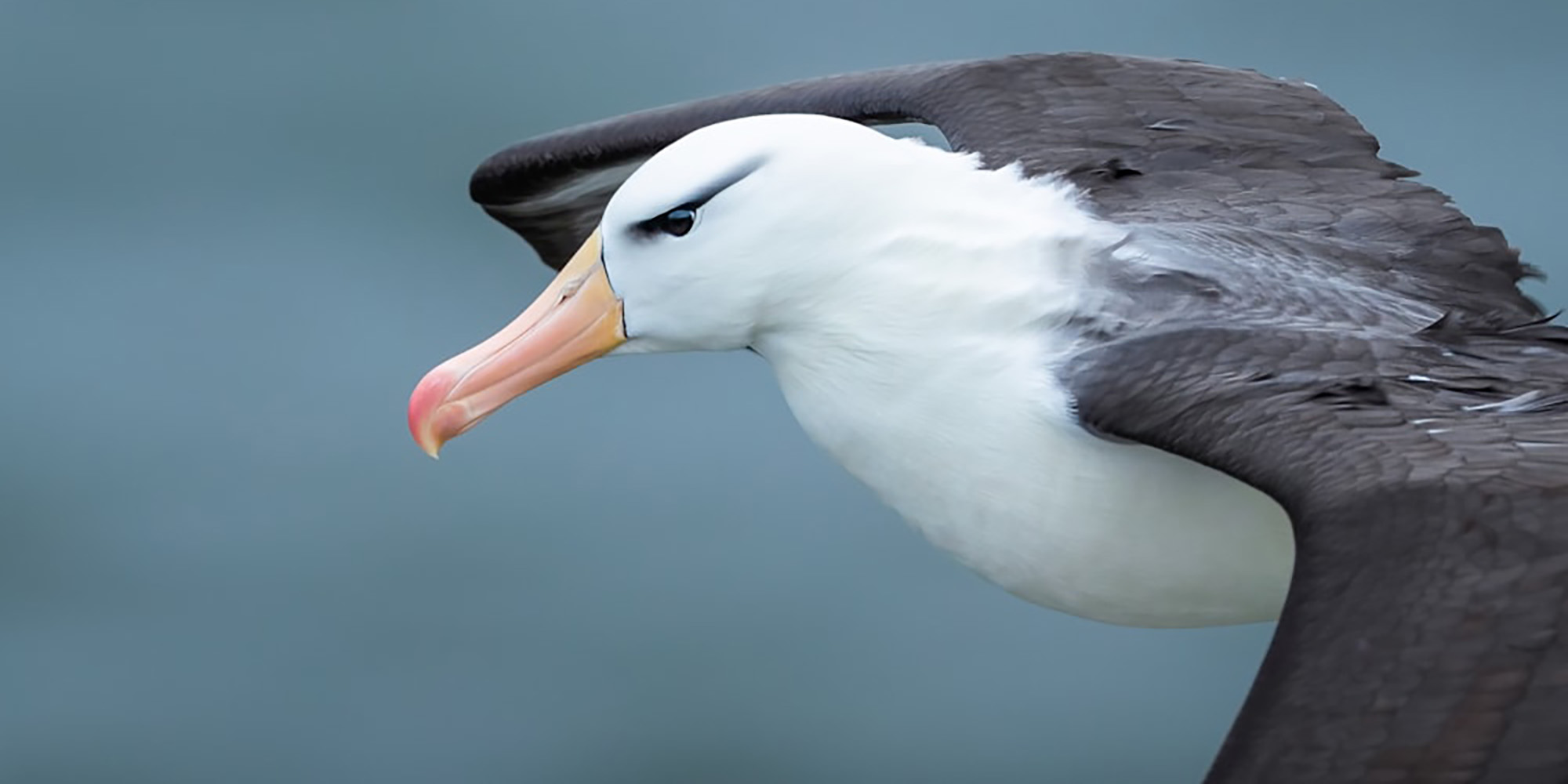
Albatrosses play a vital role in maintaining the delicate ecosystem of the Southern Ocean, making them true stewards of the sea. (Photo: Wikimedia)
“Night-setting also raises concerns over crew safety. Bird-scaring lines can become entangled with longline floats or the main line. Line weights are perceived by some fishers to reduce target catch because the weights make the bait look ‘dead.’ And some types of weighted lines may increase the risk of injury to crew during hauling.”
These perceptions work against conservation measures.
Fishing in the dark
As longliners continue to provide fish on our plates, albatross populations are tragically in steep decline from bycatch. Mitigation measures like night-setting, say the researchers, have the potential to save thousands of seabirds, but are largely not being followed.
“Without effective reporting,” they write, “it has until now been impossible to understand the uptake of these measures across the global longline fleets. Harnessing satellite data allows better understanding when these vessels are setting their line and provides a new management tool to help reduce risks to endangered seabirds.”
“Bycatch is completely avoidable,” says Oliver Yates, head of the BirdLife International Marine Programme.
“Setting hooks at night is one of the simplest and most effective measures. This study shines an important light on fishing during the darkness.”
But on the high seas, out of the jurisdiction of any country, who polices what that light reveals remains an open question. For anyone who’s seen a graceful wandering albatross skimming the waves without seeming to move a muscle, the possibility of its extinction because of human taste for wild-caught fish is disturbing. DM
To read all about Daily Maverick’s recent The Gathering: Earth Edition, click here.







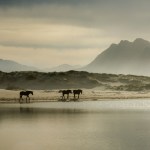









 Become an Insider
Become an Insider
Comments - Please login in order to comment.